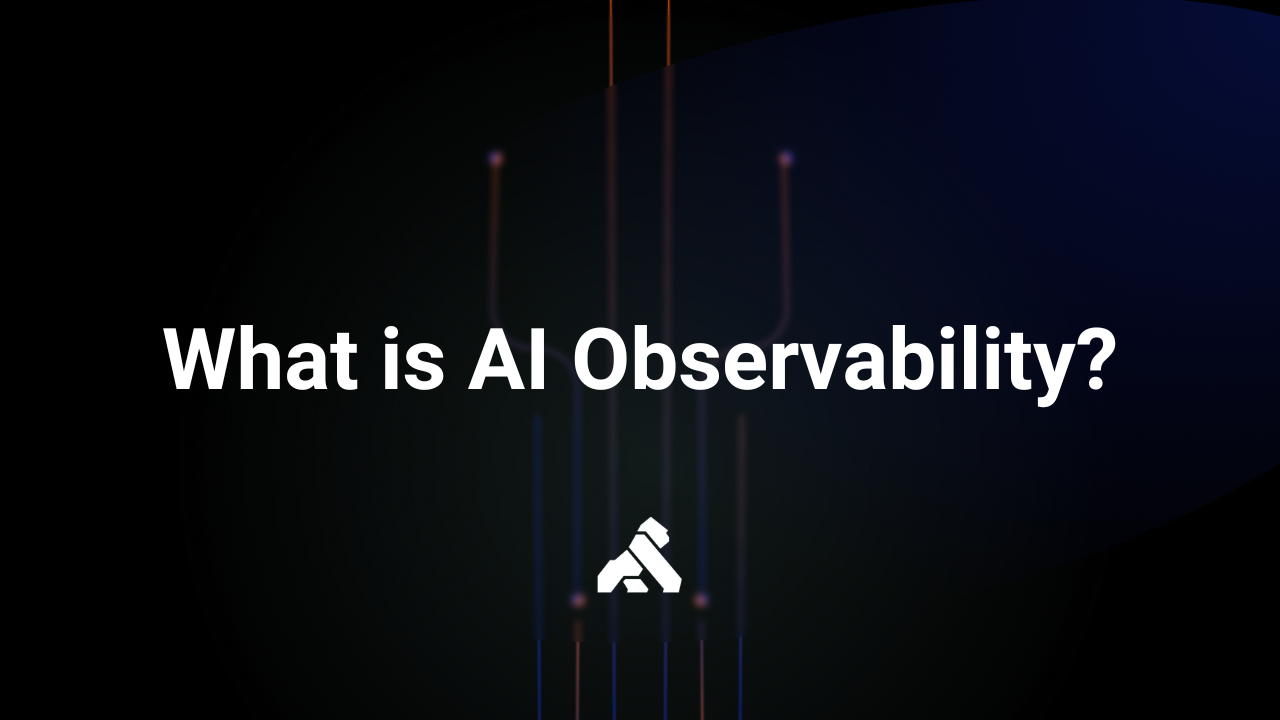Why It Matters for LLMs
LLMs are at the cutting edge of AI, navigating vast oceans of data and diving into complex problem-solving tasks. But what makes them wonderfully capable also makes them perplexing to monitor and maintain. Their complexity means that poor observability can lead to dire consequences:
- Skyrocketing costs: Inefficient resource utilization, high error rates, and slow debugging can significantly inflate your AI budget
- Sluggish performance: Unidentified bottlenecks and performance issues can lead to slow response times and frustrated users
- Security vulnerabilities: Without proper monitoring, LLMs can be susceptible to prompt injection attacks, data leakage, and other security threats
- Disappointed users: Errors, biases, and performance issues can erode user trust and satisfaction, ultimately impacting adoption
In this environment, knowing the ins and outs of AI observability isn't just an option—it's a necessity for maintaining excellence in your LLM deployments.
Real-World Application: Writer’s Journey with AI Observability
To illustrate the transformative power of AI Observability, consider the experience of Writer, an enterprise-focused generative AI platform. When Writer set out to launch their AI Studio—a suite designed to streamline the creation of generative AI applications—they faced the daunting task of revamping their API infrastructure to accommodate public access.
Their challenge was multifaceted: they needed to implement a public Gate API capable of handling rate limits, security requirements, and seamless integration with existing internal platforms. This was where Kong Konnect came into play, offering a robust solution that not only met these requirements but also enhanced their API management strategy.
Jack Viers, a Backend Developer at Writer, shared insights into how Kong Konnect's fully managed services streamlined their deployment process. The integration enabled Writer to maintain public availability while ensuring security and flexibility through customizable plugins like KeyAuth and ACL, which catered to their fine-grained capability needs. The ability to abstract and simplify their underlying platforms through Kong's intuitive interface proved invaluable, allowing Writer to focus on delivering a top-tier user experience.
The results were significant. Writer achieved a seamless deployment with minimal operational costs and enhanced security, crucial for the success of AI Studio. Viers emphasized the importance of Kong's comprehensive support, which enabled Writer to swiftly address integration challenges, ensuring a smooth rollout of their new product.
This customer story underscores the critical role of AI Observability and specialized tools like AI Gateways in managing complex LLM deployments. It exemplifies how leveraging these technologies can transform potential obstacles into opportunities, driving innovation while maintaining reliability and security. Writer's story is a testament to the strategic advantage of embracing AI Observability, not just to meet current demands, but to future-proof AI initiatives in an ever-evolving technological landscape.
A Core Solution: AI Gateways
Enter AI Gateways, your strategic command centers for routing AI traffic. These specialized infrastructure components sit between your applications and your LLM providers (whether OpenAI, Cohere, or self-hosted models), providing much more than simple connectivity.
With AI Gateways, you have a reliable co-pilot, guiding your LLM operations with dexterity and offering a panoramic view of performance, anomalies, and opportunities for enhancement. They transform potentially cumbersome troubleshooting processes into an art form, enabling you to proactively manage your LLM infrastructure and ensure optimal performance.
The Crucial Role of AI Gateways in Observability
What Are AI Gateways?
AI Gateways are not mere reverse proxies or API gateways—they're the sui generis nerve center of AI infrastructure. Specifically designed for AI workloads, they understand LLM-specific concerns like token usage, prompt engineering, and model performance characteristics.
These specialized components provide:
- Centralized routing and load balancing for AI traffic
- Model version management and A/B testing capabilities
- Fine-grained access controls and security policies
- Comprehensive observability features purpose-built for LLMs
Centralizing Observability
AI Gateways serve as your one-stop shop to capture real-time traffic, toggle new model versions, and even run A/B tests. They provide:
- Unified metrics collection: Gather performance data from all your LLM interactions in one place
- Comprehensive logging: Capture detailed information about requests, responses, and errors
- Traffic visualization: See real-time and historical patterns in your AI traffic
- Configuration management: Centrally control settings across multiple models and providers
This centralization transforms the complex task of monitoring distributed LLM deployments into a manageable operation with a single source of truth.
Accelerating Troubleshooting
With AI Gateways, tracing requests end-to-end and setting custom alerts for anomalies becomes second nature. They transform potentially cumbersome troubleshooting processes through:
- Request tracing: Follow the complete lifecycle of requests through your infrastructure
- Contextual logging: Automatically enrich logs with relevant metadata for faster analysis
- Anomaly detection: Identify unusual patterns or behaviors that might indicate problems
- Root cause analysis: Quickly determine the source of issues through correlated metrics and logs
The result is dramatically faster time-to-resolution when problems occur, minimizing downtime and user impact.
OpenTelemetry: AI Visibility Integration
What Is OpenTelemetry?
At its core, OpenTelemetry is an open-source observability framework that standardizes data collection for metrics, logs, and traces, offering a comprehensive view of your systems regardless of your tech stack. It acts like a universal translator, ensuring everything from your custom ML pipelines to third-party LLMs can communicate in a standard observability language.
Key Features:
- Vendor-neutral instrumentation APIs: Avoid lock-in with flexible tools.
- Standard formats for telemetry data: Ensure consistency across environments.
- Cross-platform compatibility: Maintain observability across cloud, hybrid, and on-premises setups.
Benefits
By integrating OpenTelemetry, you'll enjoy:
- Unified telemetry: Gain full visibility into multi-model and hybrid-cloud environments.
- Vendor independence: Prevent lock-in to specific observability platforms.
- Comprehensive visibility: Connect metrics, logs, and traces for deeper analysis.
- Simplified maintenance: Standardized instrumentation makes updates easier.
The result is a streamlined observability dashboard that transforms complex data into actionable insights.
Essential LLM Metrics and Data Collection
To fully exploit the capabilities of your AI infrastructure, it is crucial to focus on key performance indicators (KPIs) that reveal the health and efficiency of your LLM deployments. These metrics act as vital signs, guiding you toward optimal performance and efficiency.
Latency: The Pulse of Your System
Latency is like the heartbeat of your AI infrastructure—the time between sending a request and receiving a response. High latency frustrates users and diminishes the interactive experience of AI applications. Imagine latency as the speed of conversation; prolonged pauses lead users to assume something is broken.
Measurement: Track the time elapsed between sending a request and receiving a complete response. Break it down into components like network transmission time, queue time, and model processing time for granular insights.
Reduction Techniques:
- Data Caching: Store and reuse common responses to avoid repeated processing.
- Model Optimization: Use techniques like quantization or distillation to create faster versions of your models.
- Edge Deployment: Position your models closer to users geographically to reduce network latency.
- Network Optimization: Ensure high-bandwidth, low-latency connections between components.
Throughput: Your System's Capacity Indicator
Throughput measures the volume of requests your system can handle within a given timeframe—a clear marker of your system's capacity. When throughput falters, users experience delays or errors.
Scaling Strategies:
- Load Balancing: Distribute traffic evenly across multiple model instances.
- Horizontal Scaling: Add more processing nodes to handle increased load.
- Asynchronous Processing: Implement queue systems for non-real-time requests.
- Rate Limiting: Protect your infrastructure from overload by controlling request rates.
Error Rates: Pinpointing Failures
Errors are telltale signs of issues within your LLM infrastructure. Common errors include model timeouts, invalid inputs, content policy violations, and API authentication failures. Each error represents a moment of user disappointment, impacting user trust.
Proactive Monitoring Tips:
Implement detailed error logs and dashboards to spot patterns.
Set alerts for unusual spikes to address issues proactively.
Token & Cost Tracking: Budget-Friendly AI
Monitoring token usage is essential for budget management. Most LLM providers charge based on the number of tokens processed, making this a critical cost driver.
Optimization Approaches:
- Craft efficient prompts (prompt engineering) to achieve desired results with fewer tokens.
- Limit response lengths where appropriate.
- Cache responses for common queries.
- Set up budget alerts to avoid unexpected costs.
Data Collection Best Practices
To keep your data consistent and manageable, consider these approaches:
- Use structured formats like JSON logs for consistency and ease of analysis.
- Tag metrics with relevant identifiers such as model version or user segments for better filtering.
- Apply sampling strategies for high-volume systems to avoid overwhelming logs.
- Use asynchronous logging to minimize performance impact during data capture.
By focusing on these essential metrics—latency, throughput, error rates, token usage, and data collection—you can transform your LLM deployments into efficient, user-friendly systems. With thoughtful monitoring and optimization, your AI infrastructure will not only perform but excel in delivering value. Remember, the goal is not perfect monitoring, but understanding your AI well enough to make it truly helpful to the humans it serves.
Best Practices and Recommendations for AI Observability
Think of building your observability framework as a journey, not a race. Begin with foundational logging and metrics, and grow gradually by adding advanced tracing and security measures. This phased approach ensures you establish a strong foundation before adding complexity.
Implementation Approach:
- Start with the Essentials: Begin with basic request logging and essential performance metrics.
- Expand Gradually: Add more detailed metrics and error tracking as you identify needs.
- Introduce Tracing: Implement tracing for complex request flows.
- Integrate Security Monitoring: Incorporate tools for threat detection and automated responses.
This ensures you build a solid foundation, minimizing overwhelm while maximizing effectiveness.
Automate for Efficiency
Leverage automation for standard incident resolution processes, because nothing screams efficiency like automation. By automating routine tasks, you free up your team to focus on higher-value tasks like strategic planning and complex problem-solving.
Key Areas for Automation:
- Data Collection & Aggregation: Automatically gather telemetry data from all components.
- Alert Generation: Set up automated notifications for anomalies or threshold breaches.
- Incident Response Procedures: Create playbooks for standard resolution processes.
- Reporting & Trend Analysis: Use automation to generate insights on system performance over time.
Automation not only saves time but also ensures consistency and accuracy in handling repetitive tasks.
Foster Holistic Team Collaboration
Observability isn’t just a technical challenge—it’s a team effort. Invite development, security, and ops teams to collaborate in the AI observability planning process. This team approach ensures all perspectives are considered and fosters shared ownership of system health.
Collaboration Strategies:
- Cross-Functional Meetings: Schedule regular sessions to review observability data and align goals.
- Shared Dashboards: Make metrics and logs accessible to all stakeholders so everyone stays informed.
- Joint Incident Drills: Conduct practice runs of incident response procedures to streamline collaboration during real events.
- Post-Mortem Analysis: Analyze failures collaboratively to identify lessons learned and prevent recurrence.
Adopt a Continuous Improvement Mindset
Observability isn’t static—it must evolve alongside your AI systems. Regularly update alerts, dashboards, and thresholds to ensure your AI models keep pace with changes.
Improvement Cycle:
- Gather Feedback: Regularly collect input from teams using observability tools.
- Identify Gaps: Pinpoint areas where your current framework falls short.
- Implement Improvements: Make targeted updates based on identified needs.
- Measure Impact: Track how changes affect system performance and reliability.
- Repeat: Continuously iterate to keep pace with evolving requirements.
This iterative process ensures your observability framework remains precise, reliable, and aligned with business goals.
Conclusion: Observability as Your Competitive Edge
The Value of Observability
AI observability is the secret sauce that elevates LLM performance, reduces costs, and enhances user satisfaction. It transforms your AI systems from mysterious black boxes into transparent, manageable assets that deliver consistent value. AI Gateways stand as the cornerstone of effective observability, offering unified metrics that transform obstacles into opportunities.
In today’s fast-paced AI landscape, robust observability isn’t optional—it’s essential for staying competitive and ensuring ethical deployment practices.
Action Steps: Start Your Observability Journey
Ready to elevate your LLM operations? Here’s how to get started:
- Assess Your Current State: Evaluate your existing observability practices against the recommendations outlined here.
- Identify Gaps: Pinpoint areas where visibility is lacking and prioritize fixes based on business impact.
- Explore Solutions: Research AI gateway platforms that fit your technical stack and organizational needs.
- Start Small: Focus on implementing observability for your most pressing challenges first—build momentum gradually.
- Document Baseline Metrics: Record current performance data so you can measure improvements over time.
Consider signing up for a demo of leading AI gateway platforms to see how they can transform your LLM operations. Investing in robust observability will pay dividends in performance, reliability, security, and user satisfaction—setting you up for long-term success!
AI Observability FAQs
What is AI Observability, and Why is it Important for LLM Infrastructure?
AI Observability is a specialized approach to monitoring and understanding the behavior of large language models (LLMs). It extends beyond traditional system monitoring to track how LLMs handle unstructured data, make probabilistic decisions, and evolve over time. By implementing robust AI Observability, organizations can identify performance bottlenecks, detect issues like hallucinations or drift, and optimize both system reliability and resource usage.
Traditional monitoring tools were designed for databases and web servers, focusing primarily on factors like CPU and memory usage. LLMs, however, operate as complex “black boxes” that require deeper insights into semantic output, model drift, and user interactions. Standard tools typically don’t track these nuanced behaviors, making an AI-specific observability strategy necessary for accurate monitoring and troubleshooting.
How Do AI Gateways Enhance Observability in LLM Deployments?
AI Gateways serve as centralized control points for managing downstream LLM activities. They provide unified metrics collection, load balancing, and real-time logging tailored to AI workloads. By routing all traffic through an AI Gateway, teams gain a single source of truth for analyzing performance, detecting anomalies, and conducting faster root-cause analysis in LLM environments.
What Essential Metrics Should Teams Monitor for Effective AI Observability?
Key metrics include latency (time from request to response), throughput (number of requests handled per timeframe), error rates (model timeouts or incorrect outputs), and token usage (critical for cost management). Monitoring these metrics helps organizations pinpoint performance issues, manage budgets, and maintain a user-friendly AI experience.
How Does OpenTelemetry Fit into AI Observability?
OpenTelemetry is an open-source framework that standardizes data collection across metrics, logs, and traces. When integrated into AI Observability, it streamlines how organizations gather and analyze performance data from diverse models and platforms. This vendor-neutral approach simplifies troubleshooting, fosters consistency, and prevents lock-in to any single observability provider.
What are Common Errors in LLM Deployments, and How Can They Be Addressed?
Frequent LLM errors include timeouts due to high computational load, API authentication failures, policy violations, or prompt injection attacks. To address these, teams can set alerts for error spikes, maintain detailed logs of interactions, and proactively adjust system configurations or model settings—often through AI Gateways—to prevent recurring issues.
How Can Latency Be Reduced When Working with LLMs?
Latency can be minimized by caching repeated requests, using more efficient model architectures (like quantized or distilled versions), deploying models closer to users via edge locations, and optimizing network connections. Combining these strategies helps deliver faster, more responsive AI applications and improves user satisfaction.
Why is Monitoring Token Usage Essential for LLM Cost Management?
Because most LLM providers charge per token, unmonitored token usage can lead to unexpectedly high bills. Monitoring tokens helps teams craft efficient prompts, set response length limits, and cache common queries. By understanding token utilization, organizations can effectively balance performance needs with budget constraints.
What Best Practices Should Organizations Follow to Implement AI Observability?
Start with basic request logging and core performance metrics, then gradually introduce more advanced tracing and security monitoring. Automate data collection, alerting, and incident response to focus team efforts on strategic tasks. Finally, foster cross-functional collaboration among development, security, and operations teams to maintain a holistic observability strategy.
How Does a Continuous Improvement Mindset Benefit AI Observability?
Model behaviors, user interactions, and business requirements evolve rapidly. Continual refinement of metrics, dashboards, and alerts ensures observability tools stay aligned with changing needs. By iterating regularly—reviewing performance data, identifying gaps, and adjusting strategies—organizations can maintain high system reliability and adapt quickly to new AI challenges.



